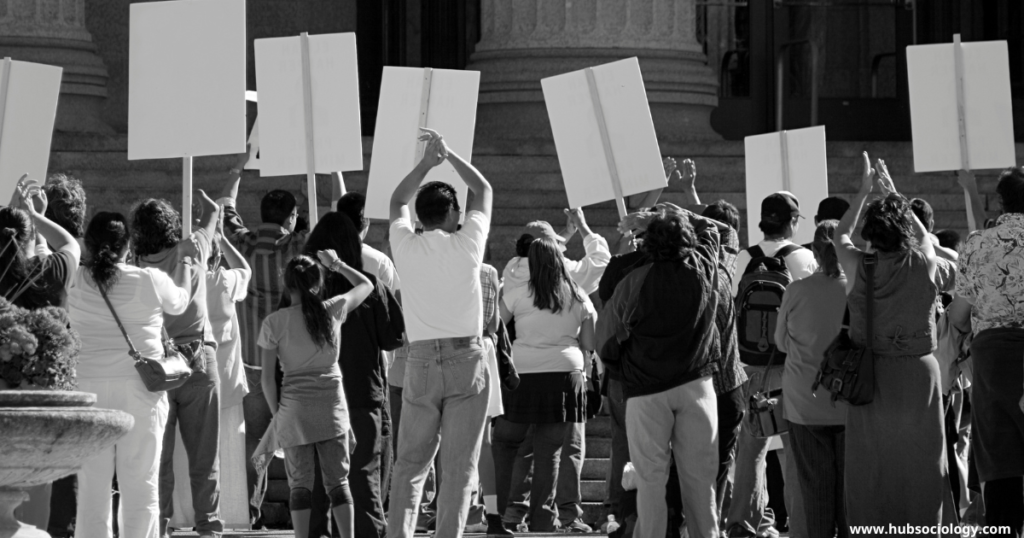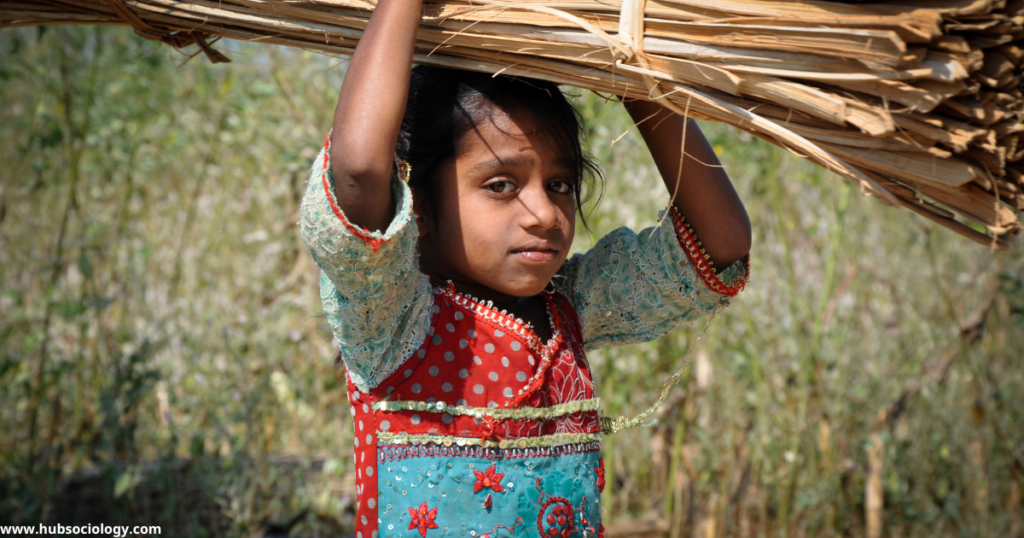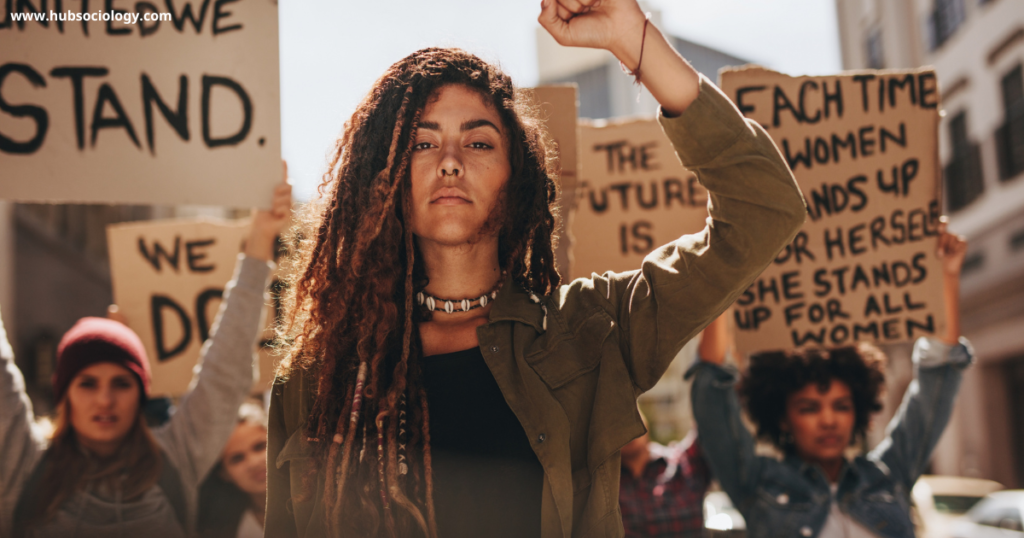Introduction

Marginalisation is a pervasive social phenomenon that excludes certain groups from full participation in economic, political, and cultural life. Sociologists have employed various theories to understand the mechanisms behind marginalisation, one of which is Relative Deprivation Theory (RDT). This theory explains how individuals or groups perceive themselves as disadvantaged compared to others, leading to feelings of injustice, frustration, and collective action.
This article explores Relative Deprivation Theory in the context of marginalisation, examining its sociological foundations, key concepts, empirical applications, and criticisms. By understanding RDT, we can better comprehend how perceived inequalities contribute to social movements, conflicts, and policy responses aimed at reducing marginalisation.
Understanding Relative Deprivation Theory
Definition and Origins
Relative Deprivation Theory was first systematically developed by sociologist Samuel A. Stouffer in his 1949 study The American Soldier, but it was later expanded by Robert K. Merton and Walter G. Runciman. The theory posits that deprivation is not absolute but relative—people evaluate their situation based on comparisons with others rather than objective standards.
When individuals or groups perceive that they are unfairly deprived of resources, opportunities, or status compared to a reference group, they experience relative deprivation, which can lead to social unrest, protests, or demands for change.
Types of Relative Deprivation
- Egoistic Relative Deprivation – Occurs when an individual feels deprived compared to others in their personal reference group (e.g., a worker feeling underpaid compared to colleagues).
- Fraternalistic Relative Deprivation – Occurs when an entire group feels deprived compared to another group (e.g., ethnic minorities experiencing systemic discrimination compared to the dominant group).
Fraternalistic deprivation is particularly relevant to marginalisation, as it explains collective grievances that fuel social movements.
Relative Deprivation and Marginalisation
Mechanisms Linking RDT to Marginalisation
Marginalised groups—such as racial minorities, lower castes, indigenous communities, and economically disadvantaged populations—often experience relative deprivation due to:
- Economic Inequality – When wealth disparities grow, marginalised groups compare their living standards with more affluent groups, fostering resentment.
- Political Exclusion – Lack of representation in governance leads to perceptions of systemic neglect.
- Social Discrimination – Caste, race, or gender-based discrimination reinforces feelings of inferiority and injustice.
- Cultural Stigmatisation – Dominant cultural narratives may devalue marginalised identities, exacerbating deprivation.
Case Studies Demonstrating RDT in Marginalised Groups
1. The Civil Rights Movement (USA)
African Americans in the 1950s–60s experienced severe racial segregation and economic deprivation. Despite legal freedoms, comparisons with white Americans’ living standards created a sense of injustice, leading to mass mobilisation under leaders like Martin Luther King Jr.

2. Dalit Movements in India
The Dalit (formerly “untouchable”) community has historically faced caste-based oppression. Despite constitutional safeguards, comparisons with upper-caste privileges have led to movements like the Dalit Panthers, demanding social justice and affirmative action.
3. Indigenous Land Rights Protests
Indigenous groups worldwide (e.g., Native Americans, Aboriginal Australians) compare their land rights and socio-economic conditions with those of settler populations, leading to protests against dispossession and cultural erasure.
Psychological and Sociological Dimensions of RDT in Marginalisation
1. Perceived Inequality vs. Objective Conditions
RDT emphasises that perception matters more than reality. Even if absolute conditions improve, marginalised groups may still feel deprived if the gap with privileged groups widens. For example:
- Rising GDP with persistent inequality can increase dissatisfaction among the poor.
- Tokenistic representation (e.g., a few women in politics) may not reduce gender-based deprivation if systemic biases remain.
2. Reference Groups and Social Comparisons
Marginalised groups compare themselves to:
- Aspirational Reference Groups (e.g., middle-class lifestyles)
- Proximate Reference Groups (e.g., dominant ethnic groups in the same region)
When upward mobility is blocked (due to discrimination or poverty), frustration intensifies.
3. Collective Action and Social Movements
RDT explains why some marginalised groups rebel while others remain passive:
- Mobilisation occurs when:
- Deprivation is seen as collective (not just individual).
- Alternatives (legal/political channels) seem ineffective.
- Strong leadership and organisation exist (e.g., Black Lives Matter).
- Passivity persists when:
- Deprivation is normalised (internalised oppression).
- Fear of repression discourages protest.
Criticisms and Limitations of Relative Deprivation Theory
While RDT provides valuable insights, it has faced several criticisms:
- Overemphasis on Perception – Some argue that structural factors (e.g., capitalism, colonialism) matter more than subjective feelings.
- Why Do Some Deprived Groups Not Rebel? – RDT cannot fully explain why some oppressed groups remain quiescent (e.g., false consciousness in Marxist terms).
- Circular Logic – The theory sometimes assumes deprivation leads to protest, but protests also redefine deprivation.
- Ignores Intersectionality – Marginalisation is multi-layered (race, class, gender); RDT may oversimplify by focusing on single-axis comparisons.
Policy Implications: Addressing Relative Deprivation to Reduce Marginalisation
Governments and institutions can mitigate relative deprivation through:
- Redistributive Policies – Progressive taxation, welfare schemes, and affirmative action to reduce inequality.
- Inclusive Governance – Ensuring political representation for marginalised groups.
- Anti-Discrimination Laws – Legal protections against caste, race, and gender-based exclusion.
- Media and Education – Promoting positive narratives about marginalised communities to reduce stigmatisation.
Conclusion
Relative Deprivation Theory offers a powerful lens to understand how marginalised groups perceive and respond to inequality. By recognising that deprivation is relational and comparative, policymakers and activists can better address the roots of social unrest. However, RDT must be complemented with structural analyses (e.g., Marxism, Critical Race Theory) to fully capture the complexities of marginalisation.

Ultimately, reducing marginalisation requires not just economic upliftment but also dismantling systemic hierarchies that perpetuate relative deprivation. Only then can societies move towards genuine equity and inclusion.
Topic Related Questions
5-Mark Questions (Short Answer)
- Define Relative Deprivation Theory (RDT) and give one example of its application in marginalised communities.
- Differentiate between egoistic and fraternalistic relative deprivation.
- How does social comparison contribute to feelings of relative deprivation?
- Name two sociologists associated with the development of Relative Deprivation Theory.
- Explain the concept of “reference groups” in RDT with an example.
- Why is perception important in Relative Deprivation Theory?
- Give an example of a social movement influenced by relative deprivation.
- What is the difference between absolute and relative deprivation?
- How does economic inequality lead to relative deprivation among marginalised groups?
- Briefly explain one criticism of Relative Deprivation Theory.
10-Mark Questions (Brief Essay/Detailed Answer)
- Discuss how Relative Deprivation Theory explains the emergence of social movements among marginalised groups.
- Analyze the role of political exclusion in creating feelings of relative deprivation among ethnic minorities.
- Compare and contrast Relative Deprivation Theory with Marx’s theory of class conflict in explaining marginalisation.
- How does fraternalistic relative deprivation contribute to collective action? Provide a real-world example.
- Examine the psychological and sociological dimensions of relative deprivation in the context of caste-based discrimination in India.
- Why do some deprived groups not rebel despite experiencing relative deprivation? Discuss with examples.
- Evaluate the impact of media representation on the perception of relative deprivation among marginalised communities.
- How can governments address relative deprivation to reduce social unrest? Suggest policy measures.
- Discuss the limitations of Relative Deprivation Theory in explaining marginalisation.
- Explain how cultural stigmatisation reinforces feelings of relative deprivation among indigenous populations.
15-Mark Questions (Long Essay/Critical Analysis)
- Critically examine the role of Relative Deprivation Theory in understanding the marginalisation of Dalits in India. Support your answer with examples.
- “Relative Deprivation is more about perceived injustice than actual deprivation.” Discuss this statement in the context of racial discrimination in the United States.
- Analyze how economic globalization has intensified relative deprivation among marginalised groups in developing countries.
- Compare Relative Deprivation Theory with Amartya Sen’s Capability Approach in explaining poverty and social exclusion.
- How does Relative Deprivation Theory help explain the rise of identity-based movements (e.g., Black Lives Matter, MeToo)? Discuss with case studies.
- “Relative Deprivation alone cannot explain all forms of marginalisation.” Critically evaluate this statement with reference to feminist and postcolonial perspectives.
- Discuss the applicability of Relative Deprivation Theory in understanding the struggles of indigenous communities for land rights.
- How do education and employment opportunities influence feelings of relative deprivation among youth from marginalised backgrounds?
- Examine the intersection of caste, class, and gender in shaping relative deprivation in Indian society.
- “Social media has amplified feelings of relative deprivation among marginalised groups.” Do you agree? Justify your answer with examples.
Additional 5-Mark Questions (Short Answer)
- How does “rising expectations” contribute to relative deprivation?
- What is the role of social media in shaping perceptions of relative deprivation?
- Give an example of how affirmative action policies can reduce feelings of relative deprivation.
- How does relative deprivation differ between urban and rural marginalised groups?
- Explain the term “structural violence” in relation to relative deprivation.
- Why do some sociologists argue that relative deprivation is subjective?
- How does unemployment among educated youth lead to relative deprivation?
- What is the “J-curve hypothesis” in the context of RDT?
- How does caste-based reservation in India relate to relative deprivation?
- Name two psychological effects of prolonged relative deprivation.
Additional 10-Mark Questions (Detailed Analysis)
- How does Relative Deprivation Theory explain the participation of middle-class individuals in protests (e.g., Arab Spring)?
- Analyze the impact of globalization on relative deprivation in developing economies.
- Discuss how relative deprivation manifests among LGBTQ+ communities in conservative societies.
- Compare the usefulness of RDT and Resource Mobilization Theory in studying farmer protests.
- Why do marginalized groups sometimes internalize deprivation instead of protesting?
- How does the “digital divide” exacerbate feelings of relative deprivation among the poor?
- Evaluate the role of education in either mitigating or reinforcing relative deprivation.
- Discuss how relative deprivation affects mental health in slum communities.
- Explain how political rhetoric can amplify or reduce perceptions of relative deprivation.
- Why might relative deprivation lead to radicalization in some cases?
Additional 15-Mark Questions (Critical Essays)
- “Relative Deprivation Theory fails to account for the role of state repression in preventing protests.” Critically evaluate.
- How does intersectionality (e.g., caste + gender + class) complicate the application of RDT to marginalized groups?
- Analyze the 2020-2021 Indian farmers’ protests through the lens of Relative Deprivation Theory.
- “Climate change is creating new forms of relative deprivation.” Discuss with examples.
- Compare RDT and Frantz Fanon’s theory of colonial violence in explaining postcolonial marginalization.
- How does the gig economy (e.g., Uber drivers, delivery workers) create new dimensions of relative deprivation?
- Critically assess whether RDT is still relevant in the age of social media activism (#BlackLivesMatter, #MeToo).
- Why do some marginalized groups prioritize cultural recognition over economic redistribution? Relate to RDT.
- Discuss how relative deprivation theory applies to the Palestinian struggle for statehood.
- “Neoliberal economic policies have intensified relative deprivation globally.” Debate with case studies.
Special Focus: Contemporary Applications
- How did COVID-19 lockdowns exacerbate relative deprivation among migrant workers? (10 marks)
- Analyze the role of RDT in the #EndSARS protests in Nigeria (2020). (15 marks)
- Why are Gen Z and Millennials more vocal about relative deprivation than older generations? (10 marks)
- How does climate-induced displacement create new forms of relative deprivation? (15 marks)
Theoretical Debates
- “RDT is outdated in an era of absolute poverty reduction.” Do you agree? (15 marks)
- How does Pierre Bourdieu’s concept of “symbolic violence” complement RDT? (10 marks)
- Can RDT explain the rise of right-wing populism among economically privileged groups? (15 marks)
